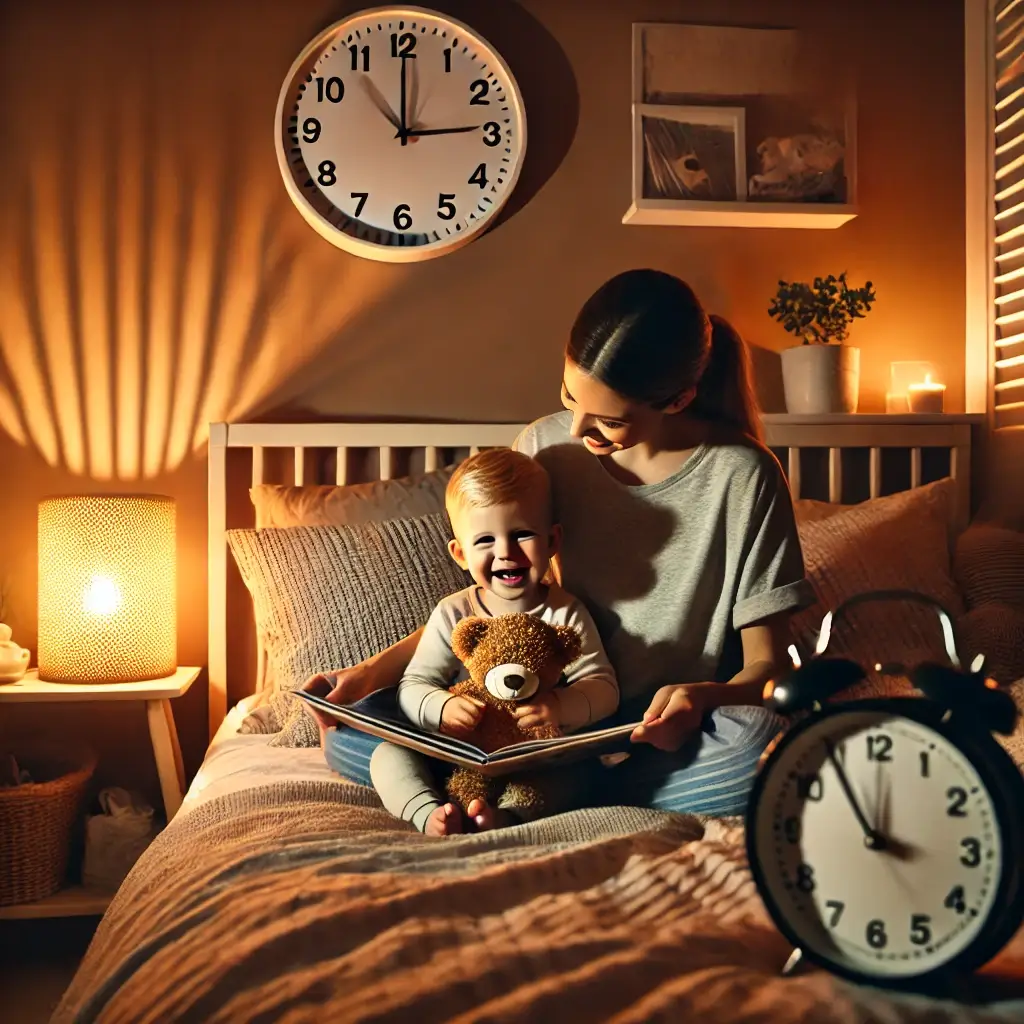The Challenge of Toddler Bedtime
For many parents, toddler bedtime can feel like an exhausting tug-of-war. As toddlers assert their independence, sleep may become a point of resistance, leading to nightly battles of tantrums, refusals, and tearful negotiations. Yet, sleep is vital for a toddler’s emotional, physical, and cognitive development. A well-rested toddler is generally happier, more attentive, and better able to manage their emotions. For caregivers, consistent sleep patterns can lead to improved well-being and stronger parent-child bonds.
The Power of Structured Bedtime Routines
While bedtime resistance is common, science offers a solution: a structured bedtime routine. Far from being a simple set of actions, a routine creates psychological and physiological signals that prepare children for sleep. This article explores how evidence-backed bedtime strategies can turn chaos into calm, offering parents practical steps to foster a restful environment. By understanding the research behind bedtime routines, caregivers can confidently support their toddlers’ sleep needs while cultivating a sense of security and predictability in the home.
Scientific Evidence Supporting Bedtime Routines
A growing body of scientific evidence highlights the effectiveness of bedtime routines in improving toddler sleep. Consider the following findings:
The Role of Predictability (2015, Journal of Sleep Research): This study demonstrated that toddlers with regular bedtime routines fell asleep faster and had fewer instances of nighttime waking. The predictability of routines helped regulate circadian rhythms, leading to better overall sleep quality (Mindell et al., 2015).
Behavioral Outcomes (2019, Pediatrics): Research linked consistent bedtime routines with reduced behavioral problems in toddlers. Children with predictable sleep schedules exhibited fewer signs of hyperactivity, impulsivity, and mood disturbances during the day (Henderson et al., 2019).
Global Impact (2021, Sleep Health): An international study found that bedtime routines positively affected children across various cultural contexts. The study underscored the universal importance of consistent pre-sleep rituals in fostering healthy sleep habits and reducing sleep-related anxiety (Owens et al., 2021).
Creating an Effective Sleep Routine
Creating a successful bedtime routine requires thoughtful planning and adaptation to your toddler’s individual needs. Follow these steps to establish a structured yet flexible routine:
Start Early: Begin winding down activities at least 30–60 minutes before bedtime. A gradual transition from active play to calming activities helps signal the brain that it’s time to sleep.
Engage the Senses: Incorporate activities that soothe the senses. For example, a warm bath can relax the muscles, while dim lighting and soft sounds can create a calming ambiance.
Focus on Consistency: Repetition is key. Perform the same sequence of activities in the same order each night to create a sense of predictability. Over time, this repetition helps toddlers associate the routine with sleep.
Limit Stimulation: Avoid screen time, loud noises, or physically demanding activities close to bedtime. Research shows that exposure to blue light from screens can delay melatonin production, making it harder for children to fall asleep (Chang et al., 2015).
Offer Choices Within Structure: Toddlers thrive on autonomy. Allowing them to choose between two bedtime books or select their pajamas can give them a sense of control without derailing the routine.
Create a Sleep-Friendly Environment: Ensure the bedroom is cool, dark, and quiet. Blackout curtains, white noise machines, and comfortable bedding can make the environment more conducive to sleep.
Addressing Common Sleep Challenges
Even the best routines may face resistance. Here are strategies to navigate common challenges:
Address Separation Anxiety: If your toddler struggles with being alone, incorporate comfort items like a favorite stuffed animal or blanket. A gentle, reassuring presence during the routine can also ease anxiety.
Adjust for Changes: Vacations, illnesses, or developmental milestones can disrupt routines. Stay flexible but return to the established routine as quickly as possible to re-establish consistency.
Seek Professional Advice: Persistent sleep difficulties may indicate underlying issues such as sleep apnea, anxiety, or dietary factors. Consult a pediatrician or sleep specialist if problems persist.
The Path to Peaceful Bedtimes
Bedtime routines are a cornerstone of healthy sleep for toddlers. By integrating evidence-based strategies and adapting them to your child’s unique needs, you can create a calming ritual that promotes better sleep and fosters emotional security. The benefits extend far beyond the night, enhancing your child’s daytime mood, focus, and behavior. As with any parenting endeavor, patience and consistency are key. With time, even the most challenging bedtime battles can give way to peaceful, restorative nights. Sweet dreams await—for both you and your toddler.
Scientific References
Chang, A.-M., et al. (2015). Evening use of light-emitting eReaders negatively affects sleep, circadian timing, and next-morning alertness. PNAS, 112(4), 1232–1237.
Henderson, J. M., et al. (2019). Bedtime routines and daytime behavior: Evidence from a longitudinal study. Pediatrics, 144(2), e20191412.
Mindell, J. A., et al. (2015). Bedtime routines and sleep patterns in young children: A cross-sectional survey. Journal of Sleep Research, 24(5), 513–521.
Owens, J. A., et al. (2021). Cross-cultural perspectives on bedtime routines and child sleep outcomes: An international review. Sleep Health, 7(3), 233–240.
